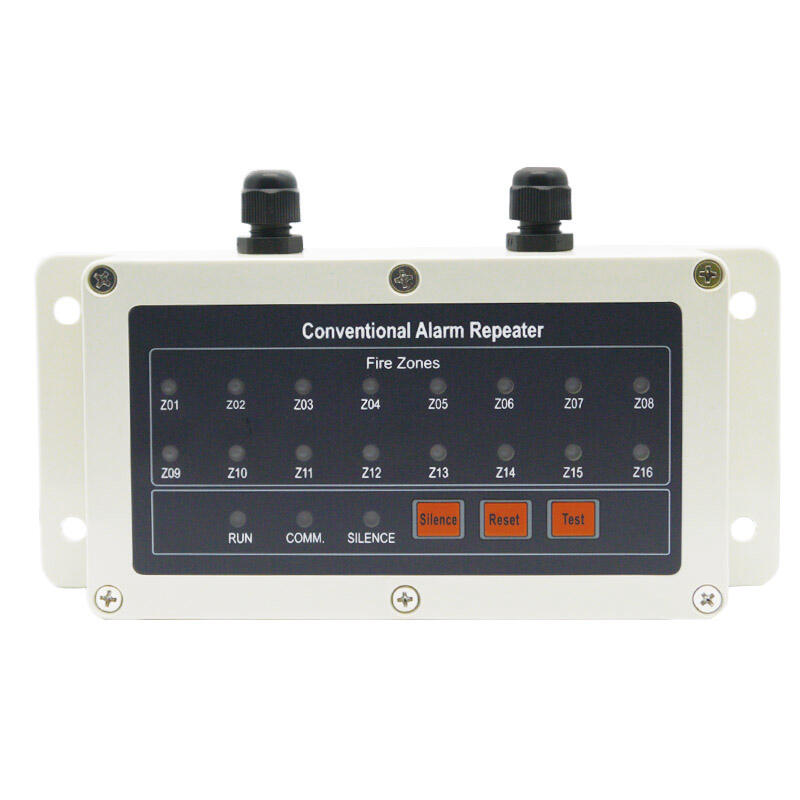In conventional fire alarm systems, zones are specific areas designated for fire detectors, with each zone configuration directly impacting the system's overall detector capacity. The number of detectors per zone can vary based on building layout and codes, ensuring efficient monitoring and response during a fire incident. Industry standards, such as those set by the National Fire Protection Association (NFPA), play a crucial role in designing these zones to optimize fire safety.
Different types of detectors, like smoke and heat detectors, have specific zone requirements. This ensures that the maximum number of devices is effectively managed within a zone, considering the complexity of the environment. By adhering to these standards, fire alarm systems can provide effective fire monitoring and protection, which is crucial for minimizing risks and ensuring occupant safety in buildings.
In conventional fire alarm systems, there is a limit to the number of detectors that can be installed per zone, predominantly influenced by the control panel's capacity and electrical parameters. Typically, the general limit is around 20 devices per zone, although this may vary based on manufacturer specifications and the system type. For example, certain projects have successfully employed this maximum limit to maintain efficiency without compromising safety.
Adhering to local and state fire codes is essential, as these regulations dictate the limitations to ensure safety standards in fire alarm installations. Compliance with these codes ensures that each zone's configurations within the system are optimized not only for performance but also for regulatory conformity, which is critical in maintaining a secure fire detection infrastructure.
Alarm repeaters play a pivotal role in enhancing the coverage and effectiveness of fire alarm systems, especially in large buildings or expansive areas. They work by transmitting alarm signals to remote locations, ensuring that alerts reach every corner where sound may not naturally propagate due to size or obstructions. By installing repeaters, the reliability of the alerting system is greatly improved, reducing the risk of overlooking critical areas that may otherwise remain silent during an emergency. Statistics from fire safety organizations have shown that using alarm repeaters can significantly reduce response times by ensuring widespread alert circulation. Additionally, repeaters often provide visual signals alongside audio alerts, thereby bolstering situational awareness and ensuring that occupants are prepared to respond promptly. For more information about CFP 8 Zone Repeater Panel and its functionality, consider examining its detailed specifications.
Despite their advantages, alarm repeaters come with several limitations that need to be considered during installation and use. They are reliant on the main control panel for power and communication, which means a problem with the panel can impact repeater functionality. Signal degradation over long distances is another concern; understanding how distance affects repeater efficiency is crucial for maintaining system integrity. Planning the number of repeaters according to the architectural design of the building is essential, as including too many can lead to signal conflicts and reduced efficacy. Instances of improper deployment have led to delayed responses during emergencies, highlighting the importance of strategic and optimal placement. Keeping these limitations in mind can help mitigate risks and ensure a robust fire alarm system. Here, the CFP Network Driver Card plays a critical role in enabling reliable communication between the master panel and repeaters.
The control panel's specifications are crucial for defining the detector link capacity in fire alarm systems. These panels determine the number of zones a system can support, thereby affecting its overall coverage. Evaluating these design specifications against industry standards, such as those outlined by the National Fire Protection Association (NFPA), ensures the fire alarm system's compliance and operational efficiency. Moreover, advanced features like support for multiple communication protocols not only expand the panel's capabilities but also enhance the system's adaptability to different building requirements. These considerations highlight that a well-specified control panel is foundational for effective and reliable fire alarm systems.
Cabling distance is a critical factor in maintaining signal integrity in fire alarm installations. The farther a signal must travel from a detector to the control panel, the greater the risk of signal degradation. This can lead to delayed or lost alarms, compromising safety. Using high-quality cabling and selecting the appropriate wire gauge are vital steps to mitigate these issues, ensuring the optimal performance of the alarm system. For instance, understanding metrics such as voltage drop can guide proper installation techniques, maintaining robust signal integrity across extensive distances, thereby enhancing the fire alarm system’s overall reliability.
Understanding power supply requirements is essential for fire alarm systems, especially during power outages. Conventional detectors need reliable power sources to maintain their functionality in emergencies. Incorporating battery backups is a key strategy to ensure the system remains operational when the primary power source fails. Utilizing verified components from established manufacturers further supports fire code compliance and guarantees dependable system performance. These considerations are crucial for effective risk management, as they ensure that fire alarm systems provide continuous protection regardless of power availability.
The Conventional Fire Alarm Repeater is a versatile component designed to enhance the functionality of fire alarm systems. It boasts a range of technical specifications that include power supply requirements of 16VDC to 30VDC, standby power consumption of ≤15mA, and an alarm power consumption of ≤75mA. Communication is achieved using the RS485 protocol with a recommended wire type of RVSP, ensuring robust signal transmission over distances up to 1200 meters. This repeater can accommodate up to four types of auxiliary boards, making it adaptable for various installations. Its ability to support different types of detectors via addressing capabilities adds to its versatility, simplifying its integration into existing systems.

Understanding these specifications is crucial for ensuring compatibility and effective integration into competitive fire alarm installations. When selecting a repeater, one must consider whether it meets the system’s needs in terms of power supply, communication protocols, and addressing options to avoid disruptions.
Compatibility is critical when integrating repeaters within a fire alarm system. Repeaters must reliably communicate with a variety of detectors and zones to maximize system functionality. Ensuring this compatibility involves selecting repeaters that match the existing components within the fire alarm installation, thereby avoiding potential issues. For smooth operation, it is essential that the repeaters do not exceed the specified distance limits, ensuring reliable signaling across predefined zones.
Selecting repeaters that seamlessly integrate with current system components enhances the fire alarm system's effectiveness. It is recommended to pair repeaters with detectors that share similar communication protocols, such as RS485, to ensure smooth connectivity. Common pairing examples include utilising RS485-compatible detectors with this conventional fire alarm repeater to enhance reliability and system performance. Prioritizing component harmonization is key to maintaining the integrity and responsiveness of fire alarm installations.
Integrating traditional wired systems with wireless fire alarm components can significantly enhance alarm capabilities and provide greater flexibility in installations. Here are some best practices to consider:
Selecting the right fire alarm system company is crucial for ensuring top-notch installation and maintenance services. Consider these insights:
By integrating the latest wireless components and collaborating with reputable fire alarm system companies, businesses can offer comprehensive fire safety solutions to keep their premises secure and compliant with regulations.

Copyright © 2024 RISOL TECH LTD All Rights Reserved Privacy policy